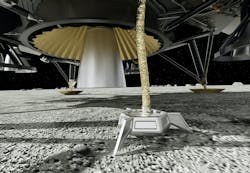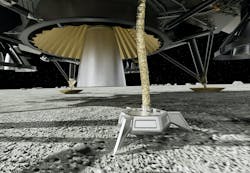Fleet Space selects Firefly to deliver payload to the far side of the Moon
CEDAR PARK, Texas - Fleet Space Technologies, a Beverly, Australia-based space exploration firm, needed a launch partner to deliver and operate Fleet's Seismic Payload for Interplanetary Discovery, Exploration, and Research (SPIDER) to the far side of the Moon. They found their solution from Firefly Aerospace, Inc. in Cedar Park, Texas. In addition to payloads from the National Aeronautics and Space Administration (NASA) and the European Space Agency, the Australian SPIDER payload will fly on Firefly's Blue Ghost lander as part of Firefly's second lunar mission in 2026.
Fleet Space's SPIDER payload is part of the Australian Space Agency's Moon to Mars initiative that's aligned with NASA's Artemis program to support future habitation on the Moon. Upon deployment of the payload, Firefly's Blue Ghost lunar lander will provide ongoing power and communications, enabling SPIDER to capture seismic data from the lunar surface for up to 14 days. This data will offer insights into the geological properties of the lunar subsurface and its mineral profile, such as water ice, that can support lunar infrastructure and further regolith exploration.
In addition to SPIDER, Firefly's second lunar mission will deliver the European Space Agency's Lunar Pathfinder satellite to lunar orbit and NASA's LuSEE-Night radio telescope to the lunar surface as part of the NASA Commercial Lunar Payload Services (CLPS) initiative. The mission's two-stage spacecraft design, utilizing Firefly's Blue Ghost lunar lander stacked on Firefly's Elytra orbital vehicle, provides robust versatility for both surface and orbital deliveries in support of growing international lunar infrastructure.
"The Firefly team welcomes Fleet Space on our far side lunar mission that will serve as a critical building block for future human and robotic missions to come," said Bill Weber, CEO of Firefly Aerospace. "Firefly proudly supports the growing lunar economy across the United States, Europe, and now Australia, and we invite additional Artemis Accords nations to join us as we collectively build a sustainable presence on the Moon."
"Fleet is thrilled to contribute our passive seismic SPIDER technology to Firefly's lunar mission to advance fundamental research into the Moon's regolith," said Matt Pearson, Co-Founder and Chief Exploration Officer at Fleet Space Technologies. "Any infrastructure built on other worlds will depend on a deep understanding of the in-situ subsurface composition - and we're honored to collaborate with the international community to help unlock critical insights for sustaining human life beyond Earth."

